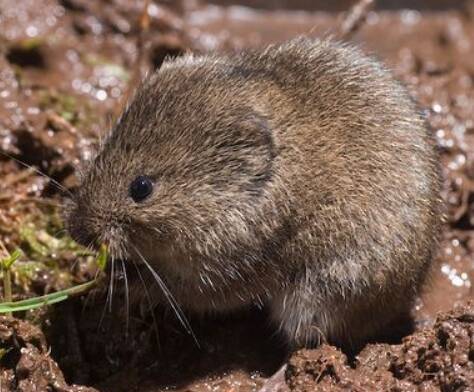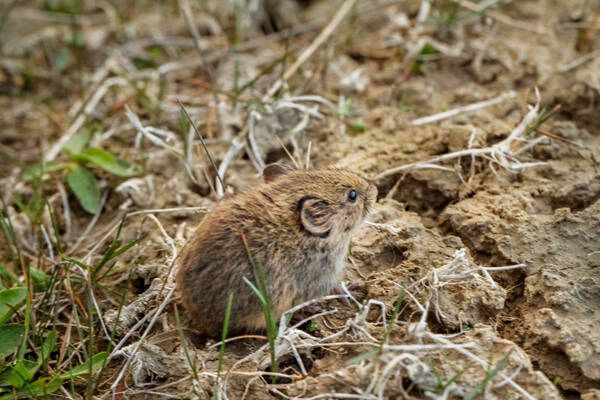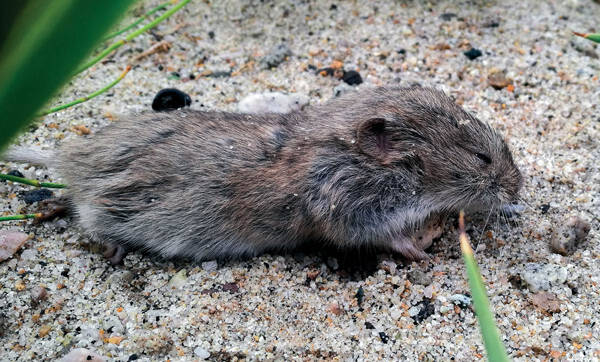Microtus oeconomus
IUCN
LCBasic Information
Scientific classification
- name:Microtus oeconomus
- Scientific Name:Microtus oeconomus,Root Vole
- Outline:Rodents
- Family:Rodentia Cricetidae Microtus
Vital signs
- length:110-150mm
- Weight:
- lifetime:
Feature
The ears are short, the tail is very short, the body hair is fluffy, and the body hair is dark gray-brown or even black-brown.
Distribution and Habitat
In China, it is only distributed in Xinjiang. Abroad, it is distributed in Europe, northern Asia and even North America.
In Xinjiang, this species is mainly distributed in the mountains of the Tianshan Mountains in northern Xinjiang. It is distributed in coniferous forests, alpine shrubs, grasslands and wetlands.
Appearance
It is a relatively large species among voles. The average body length of an adult is about 130mm (110-150mm). The tail is relatively long, averaging about 55mm, which is more than 1/3 of the body length (about 42% on average), but less than half of the body length (some individuals are more than half of the body length). The average length of the hind legs is about 20m. The average total length of the skull is about 28mm. The tail is two-colored on the upper and lower sides. The back is gray-black. The belly is white. The back of the body is gray to brown-gray, and the belly is lighter, grayish white to light yellowish white. The boundary between the back and belly is not obvious. The palatine bone is a typical vole type, with obvious bone fossa on both wings. The first lower molar has 4 closed triangles.
Details
Root voles are very tolerant of moisture, and their population is large in very humid valley wetlands that are submerged even with a slight rise in water. They are harmful to grassland and wetland ecosystems. In terms of classification, they have long been confused with the Qaidam root vole (Microtus limnophilus). Judging from the characteristics of the skull and teeth alone, they are indeed very similar: the first lower molar also has only four closed triangles, and the morphology of the three teeth in the upper molar row is exactly the same. But they also have obvious differences: root voles are much larger (the average body length of the Qaidam root vole is less than 110mm), the ratio of the tail length to the body length of the Qaidam root vole is only about 35%, and the color is also very different. In addition, the distribution areas do not overlap. The Qaidam root vole is only distributed in the Qinghai-Tibet Plateau and its surrounding areas, while the root vole is only distributed in Xinjiang in my country.

Root voles live in caves, which are relatively simple and mostly have a single entrance. They build their nests under haystacks, grass roots, and tree roots. Some individuals build outer nests. They feed on the green parts of plants, and in winter they dig up roots, tuber sprouts, and seeds of plants. They live a diurnal lifestyle. Their natural enemies are mainly weasels, foxes, wolves, and birds of prey.
This species is listed in the 2013 IUCN Red List of Threatened Species ver3.1—Vulnerable (VU).










